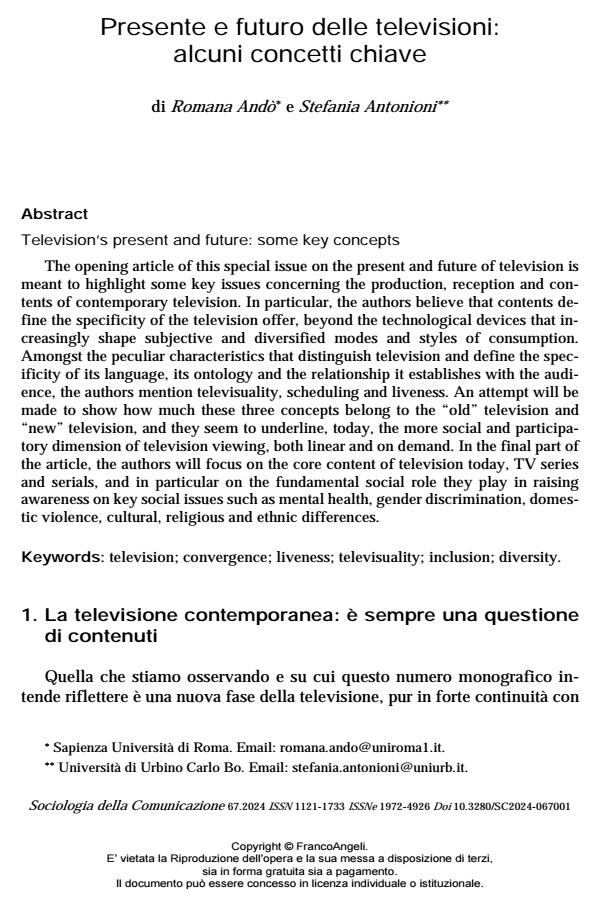Presente e futuro delle televisioni: alcuni concetti chiave
Titolo Rivista SOCIOLOGIA DELLA COMUNICAZIONE
Autori/Curatori Romana Andò, Stefania Antonioni
Anno di pubblicazione 2025 Fascicolo 2024/67
Lingua Italiano Numero pagine 15 P. 5-19 Dimensione file 106 KB
DOI 10.3280/SC2024-067001
Il DOI è il codice a barre della proprietà intellettuale: per saperne di più
clicca qui
Qui sotto puoi vedere in anteprima la prima pagina di questo articolo.
Se questo articolo ti interessa, lo puoi acquistare (e scaricare in formato pdf) seguendo le facili indicazioni per acquistare il download credit. Acquista Download Credits per scaricare questo Articolo in formato PDF

FrancoAngeli è membro della Publishers International Linking Association, Inc (PILA)associazione indipendente e non profit per facilitare (attraverso i servizi tecnologici implementati da CrossRef.org) l’accesso degli studiosi ai contenuti digitali nelle pubblicazioni professionali e scientifiche
The opening article of this special issue on the present and future of television is meant to highlight some key issues concerning the production, reception and contents of contemporary television. In particular, the authors believe that contents define the specificity of the television offer, beyond the technological devices that increasingly shape subjective and diversified modes and styles of consumption. Amongst the peculiar characteristics that distinguish television and define the specificity of its language, its ontology and the relationship it establishes with the audience, the authors mention televisuality, scheduling and liveness. An attempt will be made to show how much these three concepts belong to the “old” television and “new” television, and they seem to underline, today, the more social and participatory dimension of television viewing, both linear and on demand. In the final part of the article, the authors will focus on the core content of television today, TV series and serials, and in particular on the fundamental social role they play in raising awareness on key social issues such as mental health, gender discrimination, domestic violence, cultural, religious and ethnic differences.
Parole chiave:television; convergence; liveness; televisuality; inclusion; diversity.
- A Girls’-Eye View: Italian female adolescence and girlhood media representations Romana Andò, Leonardo Campagna, Danielle Hipkins, in Comunicación y Género /2025 pp.e101029
DOI: 10.5209/cgen.101029
Romana Andò, Stefania Antonioni, Presente e futuro delle televisioni: alcuni concetti chiave in "SOCIOLOGIA DELLA COMUNICAZIONE " 67/2024, pp 5-19, DOI: 10.3280/SC2024-067001